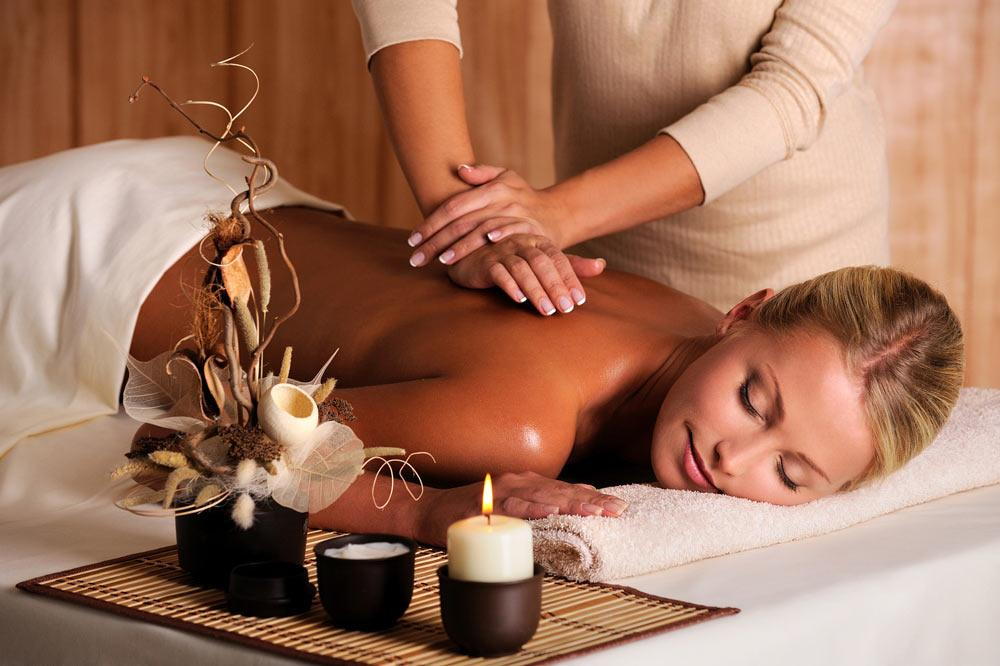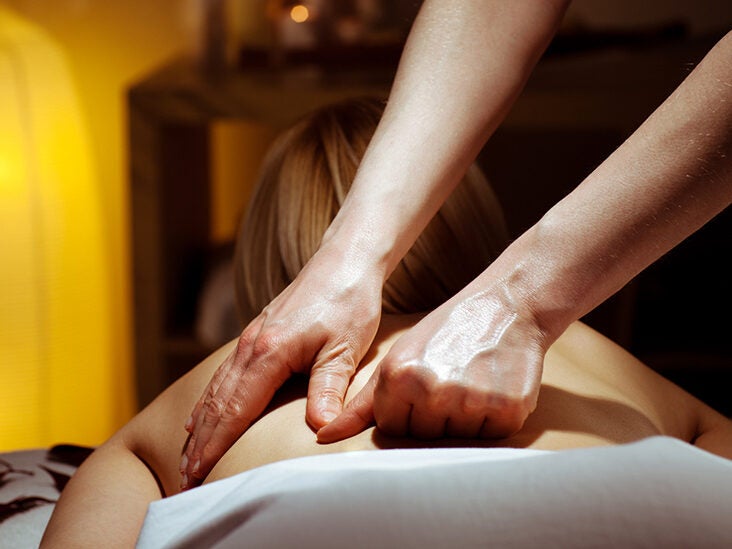
Massage therapy is one of the oldest and most widely used forms of alternative medicine. It has been shown to have numerous benefits, including reducing stress, improving circulation, and promoting relaxation. Two of the most popular types of massage are Swedish and deep tissue. While both are effective forms of massage, they differ in their techniques, goals, and benefits. In this article, we will explore the differences between Swedish and deep tissue massage to help you decide which one is right for you.
Table of Contents
1. Introduction
Massage therapy is a popular form of alternative medicine that involves the manipulation of soft tissues in the body to promote relaxation, reduce stress, and alleviate pain. There are many different types of massage, each with its own unique techniques and benefits. Swedish and deep tissue massage are two of the most popular types of massage.
2. What is Swedish Massage?
Swedish massage, also known as classic massage, is the most common type of massage therapy. It is a gentle form of massage that uses long strokes, kneading, friction, and other techniques to relax and energize the body. Swedish massage is typically used for relaxation and stress relief.
3. Techniques Used in Swedish Massage
Swedish massage uses a variety of techniques, including long strokes, kneading, friction, and tapping, to manipulate the soft tissues of the body. The therapist uses their hands, forearms, and elbows to apply pressure to the muscles and joints, helping to release tension and promote relaxation.
4. Benefits of Swedish Massage
Swedish massage has numerous benefits, including:
- Reducing stress and anxiety
- Relieving muscle tension and pain
- Improving circulation
- Promoting relaxation
- Boosting the immune system
- Improving flexibility and range of motion
5. What is Deep Tissue Massage?
Deep tissue massage is a more intense form of massage therapy that targets the deeper layers of muscle and connective tissue. It is often used to relieve chronic pain and tension, and to aid in the recovery of injuries. Deep tissue massage is typically used for pain relief and injury recovery.
6. Techniques Used in Deep Tissue Massage
Deep tissue massage uses many of the same techniques as Swedish massage, but with greater pressure and intensity. The therapist uses their hands, forearms, and elbows to apply deep pressure to the muscles and connective tissues, helping to release tension and promote healing.
7. Benefits of Swedish Massage
Swedish massage is known for its relaxing and stress-reducing benefits. Some of the specific benefits of Swedish massage include:
- Improved circulation: The gentle pressure and long strokes of Swedish massage can help improve blood flow throughout the body.
- Increased flexibility: Swedish massage can help improve range of motion and flexibility by stretching and loosening muscles.
- Reduced muscle tension: Swedish massage can help reduce muscle tension and soreness, which can lead to improved sleep and overall well-being.
- Improved immune system function: Some studies suggest that Swedish massage may help boost the immune system by increasing the production of white blood cells.
8. Benefits of Deep Tissue Massage
Deep tissue massage is often used to relieve chronic pain and muscle tension. By targeting specific areas of tension and discomfort, deep tissue massage can improve flexibility, reduce inflammation, and promote faster healing of injured muscles. In addition, deep tissue massage can help to break up scar tissue and adhesions, which can improve mobility and range of motion.
- Pain relief: Deep tissue massage can help relieve chronic pain and tension in the body, including back pain, neck pain, and headaches.
- Improved posture: By releasing tension in the muscles, deep tissue massage can help improve posture and alignment.
- Increased range of motion: Deep tissue massage can help improve range of motion and flexibility by stretching and releasing tight muscles.
- Improved athletic performance: Many athletes use deep tissue massage to help improve their performance and prevent injuries.
If you’re not sure which type of massage is right for you, consider your goals and preferences. If you’re looking for a relaxing and stress-reducing experience, Swedish massage may be the best choice. If you’re dealing with chronic pain or tension, deep tissue massage
The choice between Swedish and deep tissue massage largely depends on your personal preferences and needs. If you are looking for a gentle, relaxing massage to relieve stress and promote relaxation, Swedish massage may be the best choice for you. If you are experiencing chronic pain or tension, or are recovering from an injury, deep tissue massage may be a better option for you. Deep tissue massage can be more intense and may cause some discomfort during the session, but it can also provide more long-lasting relief from chronic pain and tension.
It’s important to communicate with your massage therapist and let them know your preferences and any specific areas of pain or tension you want to address. They can recommend the best type of massage for your needs and adjust their techniques accordingly.
9. Precautions to Take Before Getting a Massage
Before getting a massage, there are a few precautions you should take to ensure a safe and effective experience. These include:
- Checking with your doctor if you have any medical conditions or concerns
- Avoiding eating a heavy meal before your massage
- Drinking plenty of water to stay hydrated
- Communicating any health concerns or allergies to your massage therapist
- Removing jewelry or other accessories that could interfere with the massage
10. How Often Should You Get a Massage?
The frequency of massage therapy depends on your individual needs and goals. For general relaxation and stress relief, a monthly massage may be sufficient. For those with chronic pain or injuries, more frequent sessions may be necessary. Your massage therapist can help you determine the best schedule for your needs.
11. Tips for Maximizing the Benefits of Massage
To maximize the benefits of massage therapy, there are a few things you can do before, during, and after your session. These include:
- Arriving early to allow time for relaxation and preparation
- Communicating your preferences and needs to your massage therapist
- Relaxing and focusing on your breathing during the massage
- Drinking plenty of water after the massage to flush out toxins
- Stretching and staying active to maintain the benefits of the massage
12. Common Misconceptions About Massage Therapy
There are several common misconceptions about massage therapy that may prevent some people from seeking it out. These include:
- Massage is only for relaxation and luxury, not for pain relief or medical issues
- Massage therapy is only for athletes or people with physical jobs
- Massage is always painful and uncomfortable
- Massage therapists are not licensed or trained professionals
In reality, massage therapy can be a highly effective form of pain relief and healing for a wide range of conditions. Massage therapists are licensed and trained professionals who can provide personalized care and treatment for your specific needs.
One of the biggest differences between Swedish and deep tissue massage is the level of pressure applied. Swedish massage typically involves lighter pressure, with long strokes and kneading movements designed to promote relaxation and stress reduction. In contrast, deep tissue massage involves more intense pressure, with slower and more focused strokes designed to target specific areas of tension and discomfort.
In addition to differences in pressure, Swedish and deep tissue massage also use different techniques. Swedish massage typically involves a combination of long strokes, kneading, and circular movements to promote relaxation and improve circulation. Deep tissue massage, on the other hand, uses techniques such as deep pressure, friction, and stretching to target specific areas of tension and discomfort.
When choosing a massage therapist, it’s important to find someone who is trained and experienced in the specific type of massage you’re interested in. Look for a therapist who has certification or specialized training in Swedish or deep tissue massage, and be sure to read reviews or ask for recommendations to find someone with a good reputation.
13. Combining Swedish and Deep Tissue Massage
While Swedish and deep tissue massage are different techniques with different goals, they can be combined in a single session to achieve the benefits of both. By starting with Swedish massage to promote relaxation and warm up the muscles, followed by deep tissue massage to target specific areas of tension, you can experience the benefits of both types of massage in a single session.
14. Precautions and Contraindications
While massage therapy can be a safe and effective treatment for many people, there are some precautions and contraindications to be aware of. For example, if you have a history of blood clots or have recently undergone surgery, massage therapy may not be appropriate for you. It’s important to discuss any medical conditions or concerns with your massage therapist before your session to ensure that the treatment is safe and effective for you.
15. Final Thoughts
Whether you choose Swedish or deep tissue massage, or a combination of the two, massage therapy can be a valuable tool for promoting relaxation, reducing stress, and improving your overall physical and mental well-being. By understanding the differences between these two types of massage, and working with a qualified and experienced massage therapist, you can enjoy the benefits of this healing and rejuvenating treatment.
FAQs
1. Is Deep Tissue Massage Painful?
Deep tissue massage can be uncomfortable or even painful at times, especially if you have areas of tension or knots in your muscles. However, your massage therapist should be able to adjust the pressure and intensity to ensure that the massage is effective without causing excessive pain or discomfort.
2. How often Should I get a Massage?
The frequency of massages will depend on your specific needs and goals. Some people benefit from weekly massages, while others may only need a massage once a month or less frequently. Talk to your massage therapist about your goals and preferences to determine the best schedule for you.
3. Can Massage Therapy help with Anxiety and Depression?
Massage therapy has been shown to have a positive effect on anxiety and depression by reducing stress levels and promoting relaxation. However, it should not be used as a substitute for professional mental health treatment.
4. Should I Tip my Massage Therapist?
Tipping policies may vary depending on the spa or massage studio you visit. In general, it is customary to tip between 15-20% of the total cost of the massage if you are satisfied with the service.
5. How Do I Prepare for a Massage?
Before your massage, it’s important to drink plenty of water to help hydrate your muscles. Avoid eating a heavy meal right before your massage, and arrive at least 10-15 minutes early to allow time for relaxation before the session begins.




